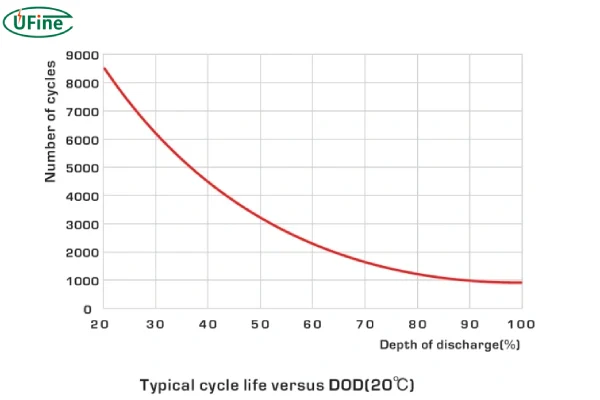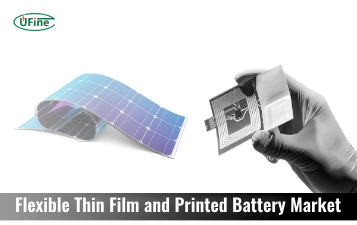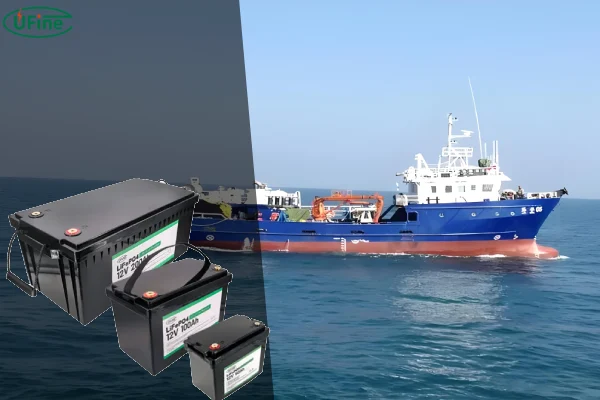The heart of any boat is its battery system. It powers everything from your navigation system and fish finder to your lights, engine, and even your onboard refrigerator. When it comes to marine applications, choosing the right battery is crucial. Deep discharge marine batteries are specifically designed to handle the demands of boating, providing reliable power for extended periods. This guide will equip you with the knowledge to select the perfect deep discharge marine battery for your specific needs, ensuring smooth sailing and worry-free adventures.
Part 1. What is deep discharge?

Deep discharge refers to a battery’s ability to be drained to a low state of charge (SOC) without compromising its lifespan. Unlike standard car batteries, which are designed for short bursts of high power, deep discharge batteries are built for sustained power delivery over extended periods. This is essential for marine applications where you might be using your boat’s electrical system for hours on end, powering trolling motors, navigation equipment, and even onboard amenities like refrigerators and lighting systems.
Part 2. The advantages of deep discharge marine batteries
Deep discharge batteries offer several advantages over conventional batteries in marine environments:
- Sustained Power Delivery: They provide a consistent power supply even when subjected to heavy loads, ensuring reliable operation of your boat’s electrical systems. This means you can enjoy uninterrupted use of your trolling motor, navigation equipment, and other essential systems without worrying about sudden power outages.
- Extended Run Time: Deep discharge batteries can handle multiple cycles of deep discharge and recharge without significant performance degradation, ensuring longer run times between charges. This translates to fewer trips to the dock or marina for recharging, allowing you to spend more time on the water.
- Durability: They are built to withstand the harsh conditions of a marine environment, including vibrations, temperature fluctuations, and exposure to salt water. This durability ensures that your battery can handle the rigors of boating without compromising performance, even in challenging conditions.
- Versatility: Deep discharge batteries are suitable for various applications, from recreational boating to commercial fishing vessels. Whether you’re cruising leisurely or engaging in demanding fishing expeditions, a deep discharge battery can provide the reliable power you need.
Part 3. Is deep discharge of batteries dangerous?
Deep discharge itself is not inherently dangerous. Deep discharge batteries are designed to handle repeated cycles of deep discharge and recharge without significant damage. However, it’s crucial to understand that excessively deep discharging can shorten a battery’s lifespan.
- Reduced capacity: Repeated deep discharges can significantly reduce the battery’s overall capacity, meaning it won’t hold a charge as long.
- Damage to internal components: Deep discharge can cause damage to the internal components of the battery, such as the electrodes or electrolyte, leading to performance issues or even failure.
- Increased risk of fire or explosion: In some cases, deep discharge can increase the risk of fire or explosion, especially with certain types of batteries like lithium-ion.
- Loss of warranty: Many battery manufacturers void the warranty if the battery is deeply discharged.
Part 4. Types of deep discharge marine batteries
There are several types of deep discharge batteries available, each with its own characteristics and benefits:
- Flooded Lead-Acid Batteries: These are the most traditional and cost-effective option. They are typically heavier than other types but offer good performance and are readily available. However, they require regular maintenance, including topping off the electrolyte levels with distilled water. This maintenance involves checking the water level regularly and adding distilled water as needed.
- AGM (Absorbent Glass Mat) Batteries: AGM batteries utilize a fiberglass mat to absorb the electrolyte, making them virtually maintenance-free. They are also resistant to vibrations and spills, making them ideal for marine applications. AGM batteries are a popular choice for boaters due to their ease of use and reliable performance.
- Gel Batteries: Gel batteries use a gelled electrolyte, which further reduces the risk of spills and increases vibration resistance. They offer excellent deep cycle performance and are well-suited for marine environments. Gel batteries are known for their durability and ability to withstand extreme temperatures, making them suitable for a wide range of boating conditions.
- Lithium-Ion Batteries: Lithium-ion batteries are the newest generation of deep discharge batteries. They are significantly lighter than lead-acid batteries, offer longer lifespans, and have higher energy density. However, they are also more expensive. Lithium-ion batteries are gaining popularity in marine applications due to their lightweight design, long lifespan, and efficient performance.
AGM VS Lithium VS Lead-Acid Battery: Comprehensive Comparison
Part 5. Choosing the right battery for your needs
Selecting the best deep discharge marine battery for your boat requires careful consideration of several factors:
- Capacity (Amp-Hours): The capacity of a battery is measured in amp-hours (Ah) and indicates how much power it can store. The higher the amp-hour rating, the longer the battery can provide power. Determine your boat’s total power needs by listing all equipment and devices powered by the battery. This includes navigation systems, fish finders, lights, pumps, trolling motors, and any onboard appliances. Calculate the total energy consumption to determine the battery capacity you need.
- Voltage: Marine batteries typically operate at 12 volts. Ensure that the battery you choose is compatible with your boat’s electrical system. Checking the battery’s voltage rating is crucial to ensure compatibility with your boat’s electrical system.
- Size and Weight: Consider the available space in your boat and the weight limits of your vessel. Larger batteries provide more capacity but take up more space and add more weight. Balancing capacity with space and weight considerations is essential for maintaining the boat’s balance and performance.
- Depth of Discharge (DoD): The DoD refers to the percentage of a battery’s capacity that can be safely discharged before needing a recharge. Deep discharge batteries typically have a higher DoD than standard batteries. Choose a battery with a DoD that aligns with your intended usage patterns. For example, if you plan on extended trips with frequent use of your electrical systems, a battery with a higher DoD is recommended.
- Charging and Maintenance: Different battery types require different charging methods and maintenance routines. Research the specific requirements of the battery you are considering to ensure proper care and longevity. Understanding the charging and maintenance requirements of your chosen battery is essential for maximizing its lifespan and performance.
- Budget: Deep discharge batteries range in price depending on their type, capacity, and features. Balance your budget with your performance requirements and long-term value. Consider the initial cost of the battery, its expected lifespan, and the cost of ongoing maintenance when making your decision.
Part 6. Charging and maintenance:
Proper charging and maintenance are crucial for maximizing the lifespan of your deep discharge marine battery. Here are some essential guidelines:
- Use a Compatible Charger: Use a charger designed specifically for deep discharge batteries. Improper charging can damage the battery and shorten its lifespan. Investing in a compatible charger is crucial for ensuring the battery is charged correctly and safely.
- Follow Manufacturer’s Instructions: Each battery manufacturer provides specific charging and maintenance recommendations. Adhere to these instructions for optimal performance. The manufacturer’s instructions are tailored to the specific battery type and offer valuable insights into proper charging and maintenance practices.
- Regularly Check Connections and Terminals: Corrosion can build up on battery terminals, reducing performance and potentially causing damage. Clean terminals regularly and ensure all connections are secure. Regular inspection and cleaning of battery terminals are essential for maintaining optimal performance and preventing corrosion.
- Store Batteries Properly: When not in use, store your batteries in a cool, dry place. Extreme temperatures can negatively impact battery performance. Storing batteries in a cool, dry environment helps preserve their charge and prevent damage from extreme temperatures.
Part 7. Conclusion
Choosing the right deep discharge marine battery is essential for ensuring reliable and long-lasting power for your boat. By understanding the different types of batteries, their advantages, and the key factors to consider, you can make an informed decision. Remember to prioritize proper charging and maintenance practices to maximize the life of your battery and enjoy years of trouble-free boating. With the right battery and proper care, you can confidently navigate the waters and enjoy your boating adventures to the fullest.
Related Tags:
More Articles

Growth Trends in the Flexible Thin Film and Printed Battery Market
The flexible thin film and printed battery market is evolving fast. This article covers its growth, innovations, challenges, and future trends.
Battery Charge Cycles: Maximize Lifespan & Performance
Learn about battery charge cycles, how to extend cycle life, and optimize performance with tips and tools like a battery charge calculator.
Understanding the 11.1V Lipo Battery: Features, Benefits, and Common Applications
The 11.1V LiPo battery powers RC models, drones, and more. This guide covers its features, benefits, and common applications.
Lithium Ion Jump Starter vs. Lead Acid: What’s the Real Difference?
A lithium-ion jump starter offers a fast, reliable way to start a dead car battery. Here's how it compares to traditional lead-acid models.
How to Safely Clean Leads from a Leaking Battery: Step-by-Step Guide
This step-by-step guide covers risks, safety tips, and proper cleaning methods for safely cleaning leads from a leaking battery.




